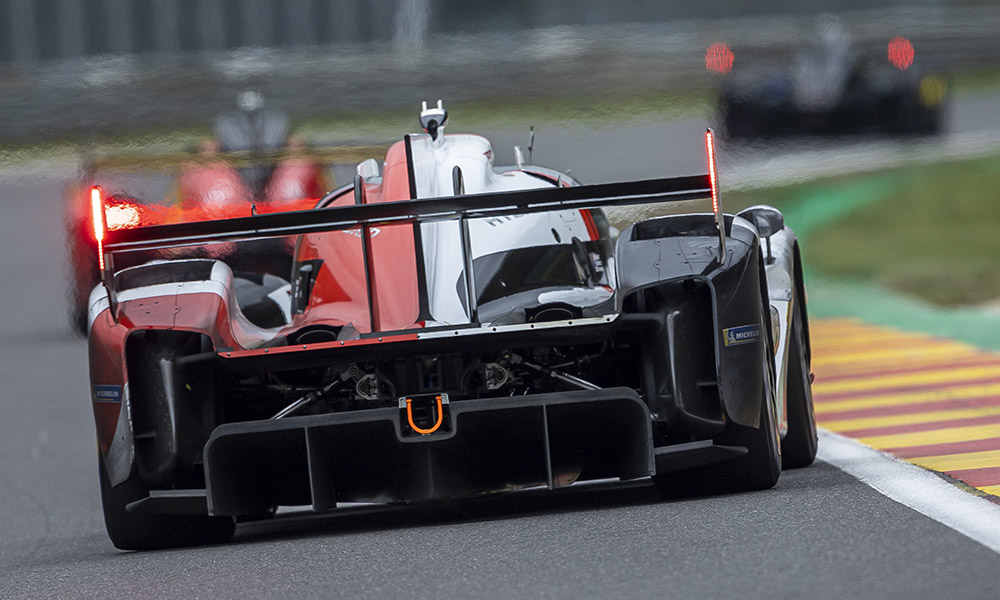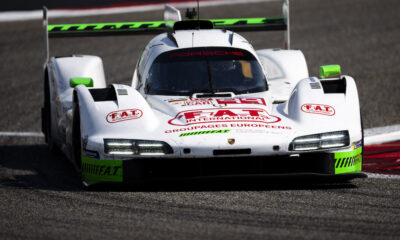
Photo: MPS Agency
Toyota Gazoo Racing has been “surprised” by a rules change from the FIA and ACO that has resulted in a Balance of Performance change prior to next weekend’s 24 Hours of Le Mans.
Confirmed earlier this week, the Toyota GR010 Hybrid, along with the Ferrari 499P, Cadillac V-Series.R and Porsche 963 have all been given varying degrees of weight increases for the blue-ribboned FIA World Endurance Championship event, in a change that was made outside of the new-for-2023 BoP ruleset.
A so-called platform BoP change, which would see equal adjustments across the entire LMH or LMDh platforms, was the only possible change per FIA and ACO rules, but was not enacted for Le Mans.
Speaking with Sportscar365 ahead of tomorrow’s Le Mans test day, Toyota WEC technical director Pascal Vasselon anticipated the BoP change could lead to Hypercar class teams sandbagging, given the uncertainty on other future adjustments.
“I can only say that we’ve been surprised by a change of rule which had not been agreed,” Vasselon said.
“It has not been agreed, clearly. The danger we see in this change of rule is that it will bring back sandbagging.
“The principle of the rules put in place was to be very strict in the sequence of Balance of Performance to discourage people to do sandbagging.
“As soon as you don’t respect the rule, then anything is possible.”
When asked if a rules change would need the approval of all manufacturers, Vasselon said: “It’s better, usually.”
The Japanese manufacturer, which swept the opening three races of the season with its four-wheel drive LMH car, has been the hardest hit with a 37 kg minimum weight increase on its configuration for the six-hour races at Portimao and Spa.
Ferrari’s new LMH car, meanwhile, has been given a 24 kg weight increase, with the LMDhs from Cadillac and Porsche gaining 11 and 3 kg, respectively. Energy adjustments have also been made to the Toyota (+4 MJ), Ferrari (+2 MJ) and Cadillac (+1 MJ).
“I’m not interested in the detail of the BoP,” Vasselon said. “For us, what is important is the principle of the rules.”
GM sports car racing program manager Laura Wontrop Klauser declined to comment in detail on the change.
“We’re focused on us,” she told Sportscar365. “We’re going to do the best we can with what we have. We’re going to find every little bit of performance we can out of the car and sort through it.
“We need to figure out where to put the 11 kg. That’s all under work.”
Urs Kuratle, Porsche’s LMDh factory director, meanwhile, said the change did not come as a surprise to the German manufacturer.
“I’m not sure there was a big surprise by the time they announced it,” Kuratle told Sportscar365. “As you can imagine there was a lot discussions in the background.
“To us internally, it was not a big surprise in the way they did it or the way it has been communicated. Of course we would have some different ideas to it.
“But at the end of the day, we have to accept what has been done. We accept the decision and we will try to make the best out of it for the race.
“When we look back in the history, it was not only the fastest car to win Le Mans. We’re still looking forward to the whole race.”
FIA/ACO: No Further BoP Changes for Le Mans
The FIA and ACO, meanwhile, have confirmed that no additional BoP adjustments will be made to the Hypercar class between Sunday’s test day and race week itself, with the current figures locked in for the duration of the event.
While initially only able to make a platform BoP change, per the rules laid out at the start of the WEC season, the two governing bodies went ahead with the so-called BoP “correction” within both LMH and LMDh machinery due to what’s believed to have been a larger performance difference than initially expected.
“Performance adjustment between LMH and LMDh platforms means changes for all cars within each group in order to balance out the best LMH car with the best LMDh car,” a statement from the FIA and ACO provided to Sportscar365 read.
“However, following the first three races of the season it turned out that performance differences within the LMH group are greater than initially anticipated, therefore balancing out only the two platforms wouldn’t be sufficient to fulfill the ultimate goal that the BoP is meant to achieve, and that is to ensure a level playing field for all competitors.
“Therefore, corrections were made between, but also within, the LMH and the LMDh platforms – BoP changes and balancing out between the platforms in this case happened simultaneously.”
The next BoP change could occur after Le Mans, prior to next month’s 6 Hours of Monza, as outlined in the original, new-for-2023 process that’s been aimed at limiting the number of adjustments during the season.
When asked whether he expects the FIA and ACO to break its agreement not to make any further BoP changes prior to the race, Toyota’s Vasselon said: “I cannot comment on that.”
Daniel Lloyd contributed to this report


























